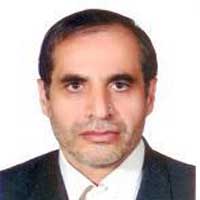Study on River Bed Evolution in 180° Alluvial Channel Bend
In this paper the bed evolution in channel bend under different hydraulic conditions is presented. Experimental tests were conducted in 180 channel bend with movable bed. In each test the bed level at various sections were measured. Experimental results showed that in all experiments, the point bar was formed in the first half of the inner bank and scour hole was formed in front of the point bar. At the outer bank, in the second half of the bend, the point bar was formed in the inner bank and some scour holes were formed in the outer bank. The position of these scour holes was found to be dependent on Froude number. By increasing the Froude number, these positions are shifted toward the apex of the bend. Verification of bed level in cross sections shows that the slope of bed increases as the Froude number increases. In this study, a relationship is presented that predicts the transverse bed profile.Also, the velocity measured in section with maximum deposition show the existence of secondary flow only in some parts of channel cross section due to the lateral balance between the upslope force induced by the helical circulation and the down slope gravitational force in the lateral direction. The oscillatory manner of the bed evolution result from oscillatory manner of depth averaged velocity across the channel.
-
Experimental Evaluation of the deep toe stability of rubble mound breakwater with Accropod concrete armor
Abbas Bagheshahi, *, Mohammadreza Motalebizadeh
Journal of Marine Engineering, -
Numerical Investigation of Geometrical Effects on the Flow Hydrodynamics in Tangential Vortex Drop Shaft
Farhad Golriz, S.A.A. Salehi Neyshaburi*
Quranic Knowledge Research, -
3D Analysis on Washout of Homogenous Fuse-Plug Embankment with Constant Discharge by Experimental Model
MOSTAFA NESHASTEGAR, Saeed Hashemi Halvaee
Journal of New Research in Sustainable Water Engineering, -
The analysis of the pattern of maritime traffic trajectory using the data mining in the Persian Gulf
Mahdi Ebrahimi Mavini*, Mahdi Shafieefar
Journal of Marine Engineering,




